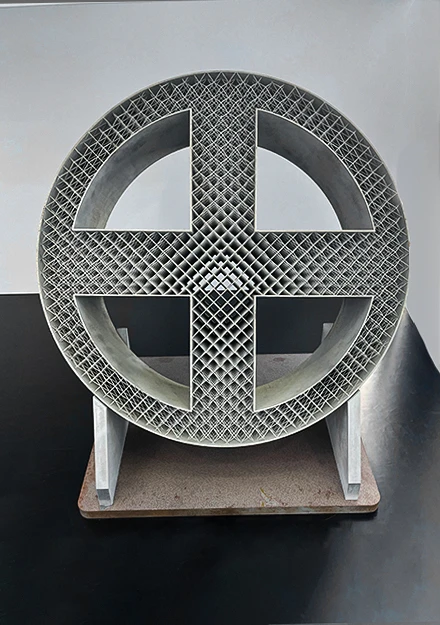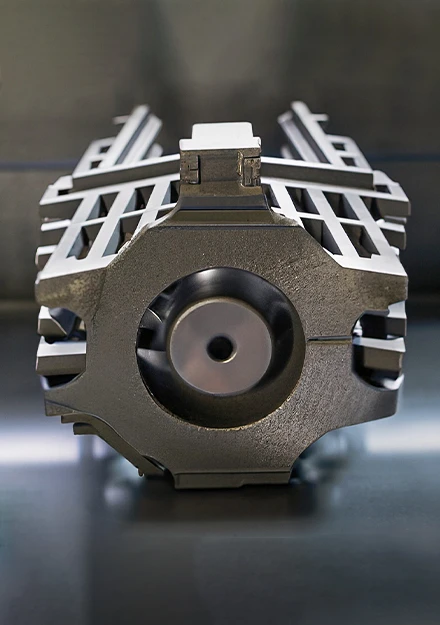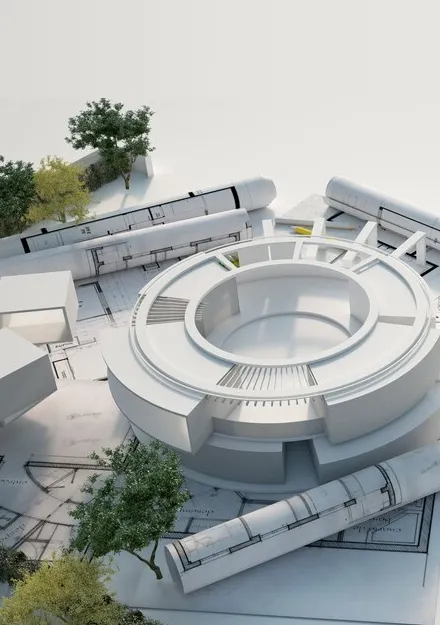
• Rapid fabrication of custom parts and prototypes.
• Eliminates additional tooling, reducing lead times.
• Enables high-quality, customized production.
• Offers greater flexibility and design freedom.
• Reduces material waste, improving sustainability.
• Lowers production costs and boosts efficiency.
• Production of industrial parts and custom components.
• Creation of functional 1:1 - scale prototypes.
• Manufacturing of tooling, jigs, and fixtures.
• Development of conceptual and visual models.
• On-demand spare parts for machinery.
• Fabrication of small, intricate mechanical parts.
• Making training aids for industrial education and safety.

• Rapid prototyping of plastic products for fast testing.
• Cost-effective production without traditional molds.
• Faster design iterations and time-to-market.
• On-demand spare parts for machinery.
• Easy modifications before mass production.
• Real material testing for better accuracy.
• Customized plastic packaging for various products.
• Unique shapes and creative packaging designs.
• Branded packaging with logos and visuals.
• Prototype packaging for marketing and approval.
• Enhanced consumer appeal and shelf visibility.

• Enables innovative and multi-functional designs.
• Reduces cost by eliminating multiple component fabrication.
• Accelerates product development and design iterations.
• Offers high precision for complex electronic geometries.
• Minimizes waste and scrap through accurate production.
• Allows quick production changes and flexible workflows.
• Production of custom circuit boards (PCBs).
• Fabrication of antennas, sensors, and connectors.
• Creation of wearables, smartphones, and drones.
• Rapid prototyping of silicone membrane buttons.
• Development of custom shielding and enclosures.
• Mold making and modification for injection molding.

• Enables production of lighter, stronger, complex parts.
• Reduces prototyping time with rapid design testing.
• Lowers R&D and tooling costs for new models.
• Improves fuel efficiency with lightweight components.
• Ensures high reliability and product quality.
• Streamlines automotive design and manufacturing process.
• Custom brackets, mounts, and interior parts.
• Components for lighting systems and wheels.
• Exterior parts like panels, spoilers, and tailpipes.
• Functional engine and transmission components.
• Valve seals, air scoops, and exhaust systems.
• Production of car bodies, axles, tools, and keys.

• Enables fast production of complex medical devices.
• Reduces manufacturing costs and time significantly.
• Improves healthcare access in remote and developing areas.
• Allows patient-specific organ models for education and surgical planning.
• Supports custom implants, prosthetics, and tools tailored to individual patients.
• Production of custom prosthetic limbs and body parts.
• Fabrication of dental implants and crowns.
• Creation of customized wheelchairs and orthotic devices.
• Manufacturing of surgical instruments and tools.
• Development of medical training models and organ replicas.
• Creation of scaffolds for tissue engineering.

• Enables on-demand production of lightweight, complex parts.
• Supports customized components for new and existing aircraft.
• Reduces production costs by eliminating tooling needs.
• Uses durable, high-performance materials for critical parts.
• Lowers fuel consumption by reducing aircraft weight.
• Enhances design flexibility, sustainability, and performance.
• Manufacturing of aerospace tooling parts.
• Production of aircraft interiors and seating components.
• Creation of fuselage, wings, and empennage structures
• Printing of propellers, blades, and vanes.
• Fabrication of landing gear and rocket engine parts.
• Development of custom satellite components.

• Reduces manufacturing costs and material waste.
• Enables fabrication of complex parts using robust materials.
• Allows rapid prototyping and early testing of new designs.
• Supports next-gen defence tech like drones and autonomous systems.
• Produces lighter, compact components for military vehicles and aircraft.
• Enhances battlefield prosthetics and medical equipment for soldiers.
• Production of marine hardware and body armour.
• Manufacturing of drone components and vehicle parts.
• Fabrication of firearms, ammunition, and weapon systems.
• Creation of helmets, shields, and tactical gear.
• Custom medical implants and prosthetic limbs.
• Development of robots and defense automation tools.

• Accelerates complex architectural design and construction.
• Enables precise creation of intricate geometries at lower cost.
• Reduces construction waste by printing large sections as single units.
• Helps architects visualize concepts through detailed physical models.
• Supports the design of organic shapes, textures, and curves.
• Aids in material selection by testing design compatibility effectively.
• Creation of physical models and architectural prototypes.
• Fabrication of molds and forms for precast concrete elements.
• Production of custom fixtures and decorative wall panels.
• Design of furniture and scale models of buildings.
• Development of recyclable building components like walls and roofs.
• Manufacturing of doors, window frames, and ornamental accents.

• Reduces costs by creating complex, customized parts.
• Optimizes designs for improved efficiency and performance.
• Produces metal parts like valves, nozzles, and casings.
• Enables rapid prototyping of parts with complex shapes.
• Streamlines supply chain with on-demand part production.
• Shortens lead times, reducing downtime and accelerating operations.
• Creation of parts for drilling and extraction equipment.
• Manufacturing of drill bits and valves.
• Production of pipeline components and safety parts.
• Fabrication of chemical tanks and welding jigs.